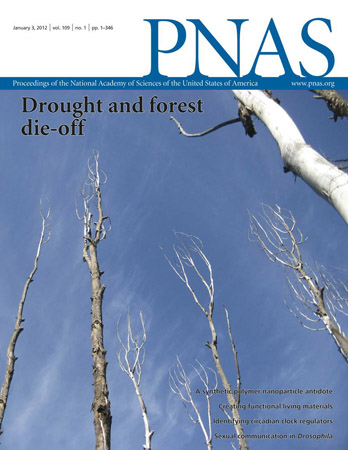
Biology Under Cover Abstract
Selected Journal & Book Covers from SBS Faculty
“The roles of hydraulic and carbon stress in a widespread climate-induced forest die-off”
William R. L. Anderegg,. Joseph A. Berry,Duncan D. Smith,John S. Sperry,Leander D. L. Anderegg, andChristopher B. Field
Commentary
This study tested major hypotheses around the physiology of how trees die from drought stress in an aspen mortality event in the western US. It found that it is the failure of the plant water transport (hydraulic) system that mediates death. This finding has since been observed in many other species across the globe. It provides a foundation for modeling and predicting forest vulnerability to climate change.
Abstract
Forest ecosystems store approximately 45% of the carbon found in terrestrial ecosystems, but they are sensitive to climate-induced dieback. Forest die-off constitutes a large uncertainty in projections of climate impacts on terrestrial ecosystems, climate–ecosystem interactions, and carbon-cycle feedbacks. Current understanding of the physiological mechanisms mediating climate-induced forest mortality limits the ability to model or project these threshold events. We report here a direct and in situ study of the mechanisms underlying recent widespread and climate-induced trembling aspen (Populus tremuloides) forest mortality in western North America. We find substantial evidence of hydraulic failure of roots and branches linked to landscape patterns of canopy and root mortality in this species. On the contrary, we find no evidence that drought stress led to depletion of carbohydrate reserves. Our results illuminate proximate mechanisms underpinning recent aspen forest mortality and provide guidance for understanding and projecting forest die-offs under climate change.
